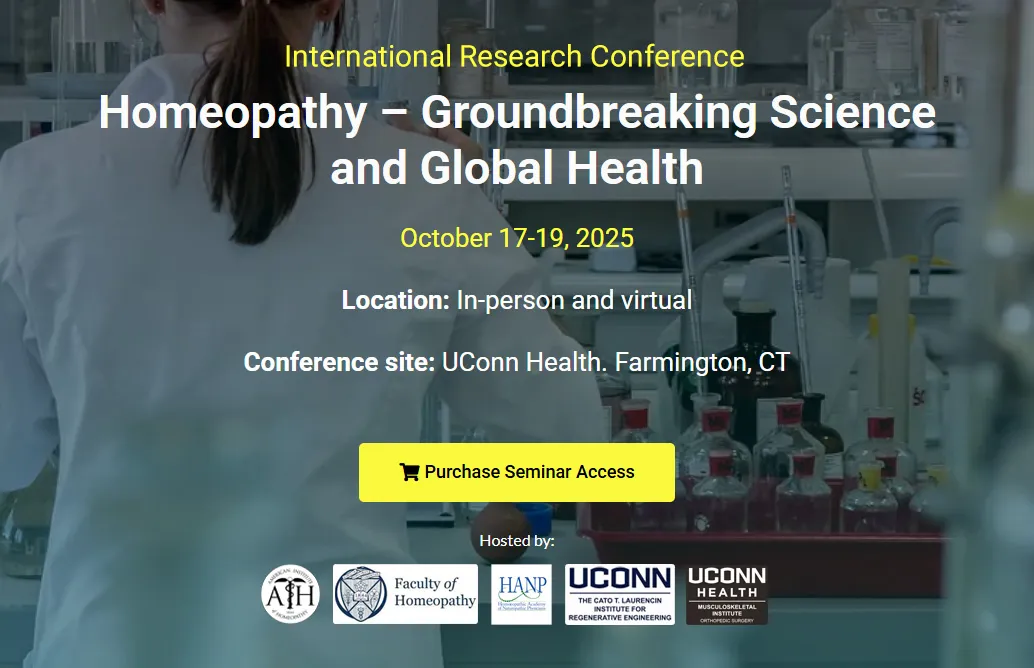Presentation Summaries – 2024 Conference
A Collaborative Homœopathic Conference
Returning to Our Roots
What Would Hahnemann Do? The Unexpected Impact of Biomedicine on the Trajectory of Homœopathy: Why History Matters as much as Evidence
Friday, September 20 / 8:30 AM -10:15 AM
Speaker: Denise Straiges M.A., CCH, RSHom(NA), PCH
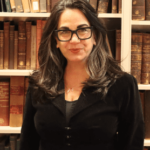 Presentation focus: Ask a homœopath how they decide on a remedy and you’ll undoubtably hear that they follow Hahnemann’s mandate to “individualize” and focus on “the person and not the named condition.” Yet, in the decades following Hahnemann’s death in 1843, the “bacteriological revolution” that ushered in “biomedical modernity” infiltrated every corner of medicine—including homœopathy. From the introduction of nosodes by Hering and Swan, to Lippe’s opposition to the teaching of pathology, this presentation examines how the uptake of scientific progress challenged post-Hahnemannian homœopathy to retain its core philosophical values and how that impacts the practice of homœopathy today.
Presentation focus: Ask a homœopath how they decide on a remedy and you’ll undoubtably hear that they follow Hahnemann’s mandate to “individualize” and focus on “the person and not the named condition.” Yet, in the decades following Hahnemann’s death in 1843, the “bacteriological revolution” that ushered in “biomedical modernity” infiltrated every corner of medicine—including homœopathy. From the introduction of nosodes by Hering and Swan, to Lippe’s opposition to the teaching of pathology, this presentation examines how the uptake of scientific progress challenged post-Hahnemannian homœopathy to retain its core philosophical values and how that impacts the practice of homœopathy today.
The Materia Medicæ of Hahnemann: An Introduction to the Primary Sources of Our Homœopathic Literature, Part 1
Friday, September 20 10:30 AM – 12:30 AM
Speakers: Nazanin Vassighi, ND, DHANP, GrTBRm and Jamie Oskin, ND, DHANP, DTBRm

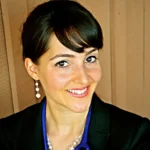 Presentation focus: The objective is for attendees to walk away less intimidated by old school toxicological reports as well as the Materia Medica Pura and The Chronic Diseases, more familiar with how these works were constructed and, therefore, better equipped to utilize them to maximal advantage in practice. We will identify the key components and structure of Hahnemann’s materia medicæ, including remedy introductions, order/organization of symptoms, author citations, time stamps, and primary and secondary actions. We will give a clinical case example to apply the topics presented in this presentation. The attendee will learn how to better utilize the primary homœopathic materia medicæ texts to apply the law of similars in practice.
Presentation focus: The objective is for attendees to walk away less intimidated by old school toxicological reports as well as the Materia Medica Pura and The Chronic Diseases, more familiar with how these works were constructed and, therefore, better equipped to utilize them to maximal advantage in practice. We will identify the key components and structure of Hahnemann’s materia medicæ, including remedy introductions, order/organization of symptoms, author citations, time stamps, and primary and secondary actions. We will give a clinical case example to apply the topics presented in this presentation. The attendee will learn how to better utilize the primary homœopathic materia medicæ texts to apply the law of similars in practice.
The Materia Medica of Hahnemann: An Introduction to the Primary Sources of our Homœopathic Literature, Part 2
Friday, September 20 / 2:00 PM – 4:00 PM
Speakers: Nazanin Vassighi, ND, DHANP, GrTBRm and Jamie Oskin, ND, DHANP, DTBRm

 Presentation focus: This 2-hour lecture will be an introduction to Hahnemann’s materia medicæ as well as the “Dimitriadis Literature Collection” library available online through a grant received by Sonoran University.
Presentation focus: This 2-hour lecture will be an introduction to Hahnemann’s materia medicæ as well as the “Dimitriadis Literature Collection” library available online through a grant received by Sonoran University.
The objective is for attendees to walk away less intimidated by old school toxicological reports as well as the Materia Medica Pura and The Chronic Diseases, more familiar with how these works were constructed and, therefore, better equipped to utilize them to maximal advantage in practice. We will examine the structure of these works including Hahnemann’s system of symptom grading, and footnotes. We will examine a toxicological report from the Old School sources and Hahnemann’s inclusion of symptoms into the materia medica from that report. We will give a clinical case example to apply the topics presented in this presentation.
Hahnemann through Bönninghausen, Pure Pharmacography through Pure Repertography
Saturday, September 21 / 8:30 AM – 10:30 AM
Speaker: George Dimitriadis, BSc, DHom, DHomMCCH(Eng), FHom(UK), FJPHMA (Jpn), FHISyd
 Presentation focus: This session will be broken into three parts:
Presentation focus: This session will be broken into three parts:
- Pharmacography: This session will present a brief overview of Hahnemann’s pharmacographies, from Fragmenta, into RA (MMP) and CK (CD), evidencing Hahnemann’s accuracy and fidelity in recruiting symptoms from old-school sources and how he was able to indicate a degree of certainty as to the reproducibility of effects recorded.
- Repertography: We briefly overview the historical development of repertory from the initial attempts of Hahnemann, through the works of Hartlaub, Schweickert, Weber, Rückert, and finally into the work of Bönninghausen through his TFR and into his Therapeutisches Taschenbuch (TT), which final unique work forms the most efficient tool for applying Homœopathy strictly in accord with the teachings of Hahnemann.
- Cases: The application of TT using our TBR2 will be illustrated with case examples from our own practice. In each case, we will show the connection between repertory and pharmacography and how certainty is obtained through close reference to the original source material on toxicological effects cited by Hahnemann.
Posology—The 6th Edition Way
Saturday, September 21 / 10:45 AM – 12:15 PM
Speaker: Kathleen Slonager, RN, DiHOM, ADS, AE-C, CCH
 Presentation focus: Posology literally means “the study of how much.” In Homœopathy, this is a critical question that every student and professional must know how to answer. Fortunately, Hahnemann did define this for us in his many editions of the Organon. However, it was in the last edition (6th) that he fine-tuned dosing methods and developed precise instructions called “split dosing.”
Presentation focus: Posology literally means “the study of how much.” In Homœopathy, this is a critical question that every student and professional must know how to answer. Fortunately, Hahnemann did define this for us in his many editions of the Organon. However, it was in the last edition (6th) that he fine-tuned dosing methods and developed precise instructions called “split dosing.”
In this presentation, we will explore a few aspects of posology, especially as it relates to the “split dose” method, which some experts say is the ideal way to prescribe remedies. Case discussions will also be presented.
Homœopathic Neural Regeneration and Recovery: Linking Neurological Cases with Hahnemann’s Toxicological Sources
Saturday, September 21 / 2:00 PM- 4:00 PM
Speaker: Juan Carlos Gamba, MD, GrTBRm, FCAHom
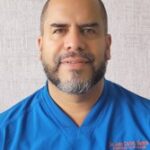 Presentation focus: In this presentation, Dr. Gamba will present 3 complex cases with severe pathology that recovered with homœopathic treatment. Dr. Gamba will present a case of cerebellar ataxia with cerebellar atrophy that was reversed with homœopathic treatment, including video evidence as well as pre-and post-MRI results. The other cases presented will be a stroke recovery case and a case of metabolic encephalopathy, wherein the patient was rescued from a near-death state with the aid of homœopathy. All cases have video and/or photo documentation of pre and post-recovery to document the evidence for the response to homœopathic treatment. Dr. Gamba will teach how he arrived at the homœopathic remedies indicated in each case by utilizing the TBR2 repertorial method and referencing the prescription via similars to Hahnemann’s materia medicæ as well as toxicological sources cited by Hahnemann.
Presentation focus: In this presentation, Dr. Gamba will present 3 complex cases with severe pathology that recovered with homœopathic treatment. Dr. Gamba will present a case of cerebellar ataxia with cerebellar atrophy that was reversed with homœopathic treatment, including video evidence as well as pre-and post-MRI results. The other cases presented will be a stroke recovery case and a case of metabolic encephalopathy, wherein the patient was rescued from a near-death state with the aid of homœopathy. All cases have video and/or photo documentation of pre and post-recovery to document the evidence for the response to homœopathic treatment. Dr. Gamba will teach how he arrived at the homœopathic remedies indicated in each case by utilizing the TBR2 repertorial method and referencing the prescription via similars to Hahnemann’s materia medicæ as well as toxicological sources cited by Hahnemann.
Guiding Symptoms
Sunday, September 22 / 9:00 AM – 11:00 AM
Speaker: Wendy Jenson, DVM, CVM
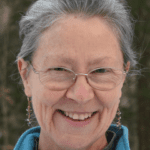 Presentation focus: In this presentation, we will explore the importance and application of guiding symptoms. First, guiding symptoms in the literature (Organon, Boericke’s Compendium, Kent’s Lectures on Homœopathic Philosophy, Hering’s Guiding Symptoms, Dimitriadis’ Homœopathic Diagnosis) will be examined, followed by an examination of the role guiding symptoms play in our materia medica, in case taking, and in prescribing.
Presentation focus: In this presentation, we will explore the importance and application of guiding symptoms. First, guiding symptoms in the literature (Organon, Boericke’s Compendium, Kent’s Lectures on Homœopathic Philosophy, Hering’s Guiding Symptoms, Dimitriadis’ Homœopathic Diagnosis) will be examined, followed by an examination of the role guiding symptoms play in our materia medica, in case taking, and in prescribing.
Active Learning Skill Building Workshop
Sunday, September 22 / 12:00 PM – 3:00 PM
Moderators: George Dimitriadis, Jamie Oskin, Nazanin Vassighi, and Juan Carlos Gamba, MD, GrTBRm, FCAHom
Presentation focus: This workshop will provide a hands-on experience around what was taught during the conference, guided by our on-floor teachers. Conferees will learn how to:
- Search for old-school toxicological reports in the Dimitriadis Literature Collection at the Sonoran University online library and compare those reports to Hahnemann’s Materia Medica. Rubric placement in the repertory using this information will also be discussed.
- Use the TBR2 (Bœnninghausen Therapeutic Pocketbook) case analysis methodology in a series of case exercises.
— For all Participants —
Free trial to the TBR2.1 Repertory computer programme
The Hahnemann Institute Sydney is pleased to offer all participants in the “2024 Collaborative Homœopathic Conference” a one month free trial to the TBR2.1 repertory computer programme. Both live and virtual attendees will have access to this software during the conference so that you can fully participate to practice the skills you will learn in the lectures and in the Active Learning Skill Building Workshop. We will be using the software with practice cases so that you can gain experience and become familiar with using the Bönninghausen Therapeutic Pocketbook (TBR2.1) Repertory.
If you enjoy your experience with the software, you will have the opportunity to subscribe after the conference here.
To activate the trial membership, please watch the following video tutorial carefully:
- Mac: Watch YouTube Video
- Windows: Watch YouTube Video
Please access your trial membership with your unique Username and Password no later than Thursday, September 19th!
For further information or assistance please Send an email or
Call Us +1 303-665-2423 (Hours: Monday – Friday 9-5pm MT).
**TBR2.1 Tech support is not guaranteed past September 19, 2024.


